Once regarded primarily as a tourism hotspot, Miami is now emerging as one of the nation’s buzziest tech and finance hubs. In just a few transformative years, accelerated also by the pandemic, the city has gained a new reputation as “Silicon Beach,” a budding epicenter of innovation and capital. The growing skyline of Brickell, Miami’s financial district, glitters with new high-rises and corporate logos, hinting at how much the city’s economic profile has broadened beyond hospitality.
This article explores Miami’s new appeal to tech companies, the influx of finance firms into Brickell, the government incentives fueling this growth, the impact on housing costs, and how these shifts coexist with the city’s enduring tourism industry.
Jump to: Tech Companies • Brickell • Government Incentives • Living Impacts • Balancing the Boom • Conclusion • FAQ
TL;DR – Miami’s Transformation
- Tech magnet: VC funding hit $4.6B in 2024, Apple/Microsoft/Amazon expanding
- Brickell = “Wall Street South” with Citadel, Blackstone, Goldman Sachs, and more
- Incentives: zero state income tax, relocation grants, job creation refunds
- Costs rising: Miami now least affordable U.S. housing market
- Tourism remains strong, blending leisure with new business identity
More on Miami:
Appeal to Relocating Tech Companies
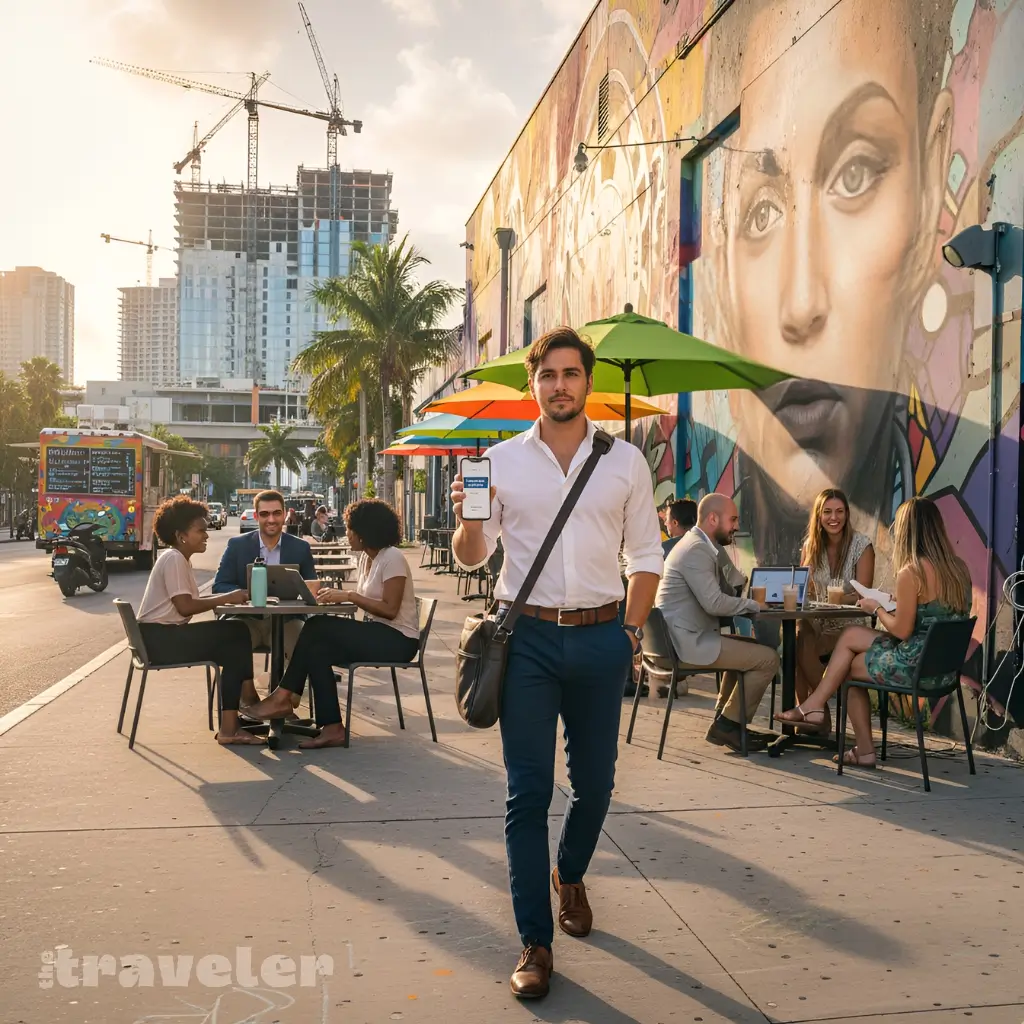
What’s drawing tech entrepreneurs and startups to a city better known for vacations? In short, Miami offers a rare blend of business advantages and lifestyle perks. Key factors include:
Business-Friendly Climate:
Florida famously has no state income tax, and its regulatory environment is considered pro-business. During the COVID-19 pandemic, as remote work untethered workers from traditional tech hubs, Miami seized the moment.
Mayor Francis Suarez’s now-famous 2020 tweet — “How can I help?” in response to a proposal to move Silicon Valley to Miami — was a symbolic green light that Miami was rolling out the welcome mat for tech founders and investors. The city’s leadership actively courted the tech community, signaling an openness to innovation and even embracing cryptocurrencies (Miami officials launched initiatives like MiamiCoin and hosted major blockchain conferences).
Quality of Life:
Miami’s allure goes beyond taxes. The city offers year-round warm weather, beaches, and an international lifestyle that appeals to many tech workers seeking a change of pace from Silicon Valley or New York. During the pandemic, entrepreneurs realized they could swap cramped apartments for oceanfront condos and still build their companies.
As one relocation put it, Miami provides “sunshine and beauty” alongside growing tech opportunities. The very amenities that once made Miami a tourist playground are now selling points for tech talent – from the vibrant arts scene of Wynwood to a dining culture enriched by global influences.
Growing Tech Ecosystem:
Success breeds success, and Miami’s tech scene now has real momentum. Major tech firms are expanding here. In early 2024, for example, Apple announced plans for a new 45,000-square-foot campus in Coral Gables (part of Greater Miami), making headlines as a vote of confidence in the area. Microsoft and Amazon have likewise been growing their Miami footprints.
Venture capital has followed: Miami startups attracted a record $4.6 billion in VC funding in 2024, vaulting the city to fifth place nationwide for the number of venture deals. Globally, Miami’s startup ecosystem has risen to rank 16th in the world as of 2024, ahead of cities like Seattle and Austin.
This rapid ascent – including an 18% year-over-year increase in tech jobs locally after Apple’s announcement – creates a virtuous cycle attracting even more companies and talent. Tech conferences add to the buzz: the annual eMerge Americas conference, for instance, now draws over 20,000 attendees from 60+ countries to Miami Beach, underscoring the city’s growing stature in tech.
In short, Miami has positioned itself as an unlikely tech magnet, combining a welcoming business environment with an enviable lifestyle. As one blockchain CEO who moved his company from New York put it, “Miami was an easy choice for us… it’s probably the most excited city in the world about crypto right now”. That excitement now extends across the tech spectrum, turning a one-time vacation town into a serious contender for the tech capital of the East Coast.
Brickell
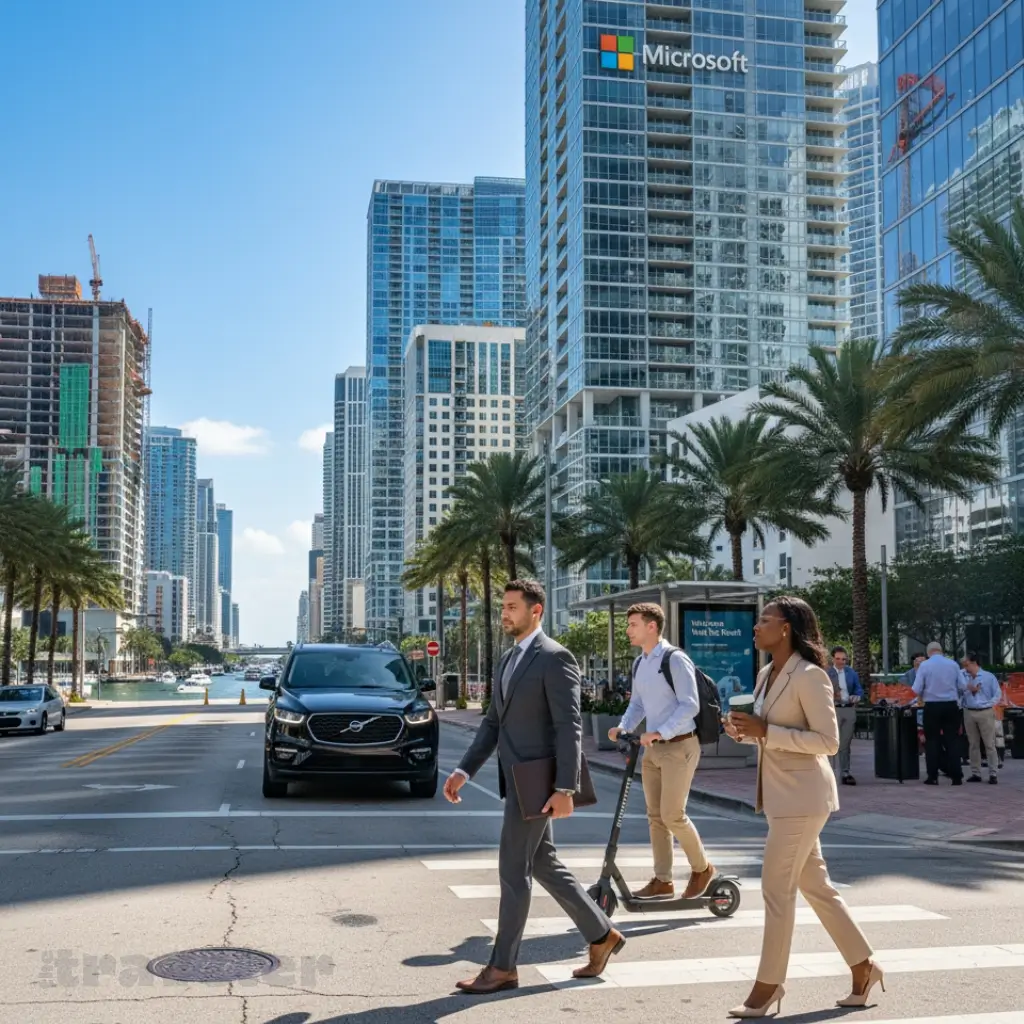
Nowhere is Miami’s financial boom more visible than in Brickell, the downtown district now dubbed “Wall Street South.” This neighborhood, once known for its banking offices and luxury condos, has seen an influx of major finance and investment firms setting up shop.
The trend gained national attention in 2022 when billionaire Ken Griffin announced he was relocating Citadel, his $59 billion hedge fund and securities firm, from Chicago to Miami. Citadel’s move was a watershed moment – “since the move, even more financial firms have moved to, or expanded in, Wall Street South,” notes one report.
Indeed, Brickell is rapidly evolving into a true financial powerhouse. Griffin’s firm is constructing a new 54-story headquarters tower at 1201 Brickell Bay Drive, a Foster + Partners-designed skyscraper that will dramatically alter the skyline. Citadel’s arrival has been followed by a parade of Wall Street names:
- Hedge Funds & Private Equity: Firms like Thoma Bravo (a major private equity player) opened a Miami office in 2022. Millennium Management, another large hedge fund, is building a tech hub in the city. Many hedge funds now base the bulk of their operations in Brickell’s glittering towers, earning Miami comparisons to Manhattan’s financial district.
- Investment Banks & Asset Managers: Longtime presence Goldman Sachs, which has had offices in Miami since the 1980s, recently expanded into larger Brickell digs. Blackstone and BlackRock have also grown their Miami teams, leveraging the city as a base for technology and client services. Even international banks like Santander and Rothschild & Co. have taken space in new Brickell developments , underscoring Miami’s emergence as a nexus for global finance.
- Brickell’s New Landmarks: A testament to Brickell’s boom is the success of 830 Brickell, a brand-new 57-story Class A office tower that is almost entirely leased to finance, tech, and law firm tenants. In fact, over 90% of 830 Brickell’s tenants are companies new to the Miami market, lured by the city’s promise. The roster reads like a who’s-who: Microsoft, Citadel, Kirkland & Ellis, Thoma Bravo, Santander Bank, and others have all signed on. Office rents in Brickell have more than doubled since construction began on this tower, reaching levels above $100 per square foot – on par with major financial centers.
Ken Griffin has gone so far as to predict that Miami could one day overtake New York as the financial capital of the U.S.. While that may be ambitious, there’s no denying that Brickell now teems with suit-and-tie businesspeople on weekdays – a jarring contrast to the beachwear-clad tourists of Miami lore.
Upscale restaurants and rooftop bars in the area are bustling with bankers and venture capitalists networking over lunch, injecting a cosmopolitan finance vibe into the city’s social scene. The growth of Brickell as a finance hub has earned Miami its new moniker “Wall Street South,” and with each new hedge fund or private equity office opening, the name becomes that much more fitting.
Government Incentives
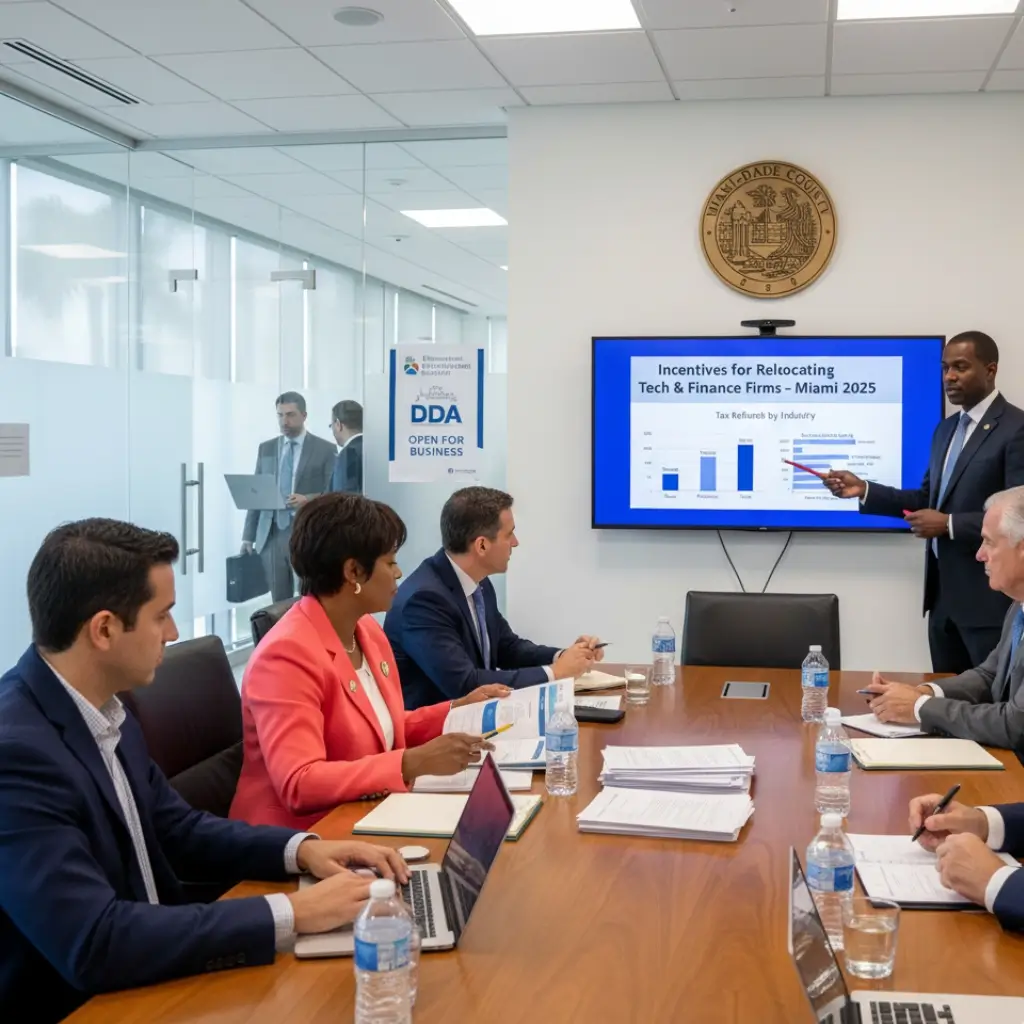
Miami’s rise as a tech and finance hub isn’t happening by accident – local and state government incentives have played a significant role. Florida’s overall business-friendly stance (including zero state income tax and competitive corporate taxes) provides a favorable backdrop.
On top of that, state and local authorities have rolled out targeted programs to attract companies and high-paying jobs:
- Tax Refunds for Job Creators: Miami-Dade County offers a Targeted Jobs Incentive Fund (TJIF), which provides tax refunds to companies in high-value industries (like finance and tech) that expand or relocate to the area and create at least 10 new full-time jobs. Eligible firms can receive refunds on a portion of the taxes they pay, up to 80% over a period of years, especially if they meet wage and green building targets. For large-scale projects, Florida also has a High Impact Performance Incentive grant for companies investing $50 million+ and creating 50+ jobs.
- Downtown Relocation Grants: To boost the urban core, the Miami Downtown Development Authority (DDA) offers grants specifically to financial services, tech companies, and corporate headquarters that move into downtown/Brickell and create new jobs. This program incentivizes firms that pay wages at least 125% of the local average, helping ensure the jobs are high-quality. In essence, Miami is putting money on the table to draw in the kinds of employers that can transform the economy.
- Workforce Training and Opportunity Zones: Florida and Miami-Dade also provide grants for training workers (through programs like Florida Flex and On-the-Job Training reimbursements) to help relocating companies skill up their talent locally. Additionally, designated Opportunity Zones in certain Miami neighborhoods offer federal tax advantages for investors who fund businesses or real estate in underserved areas. These initiatives make it financially attractive for companies to not only come to Miami, but to invest in the community and workforce.
City leaders frequently tout these incentives when courting companies. Miami Mayor Francis Suarez has been a vocal cheerleader, often personally meeting with tech CEOs and promoting Miami as a place where red tape is minimal and innovation is welcome.
The message is clear: Miami is open for business, and public policy is aligned with the goal of making the city the next big tech and finance hub. This supportive environment has helped tip the scales for many firms deciding between Miami and other locales.
Cost of Living Impacts
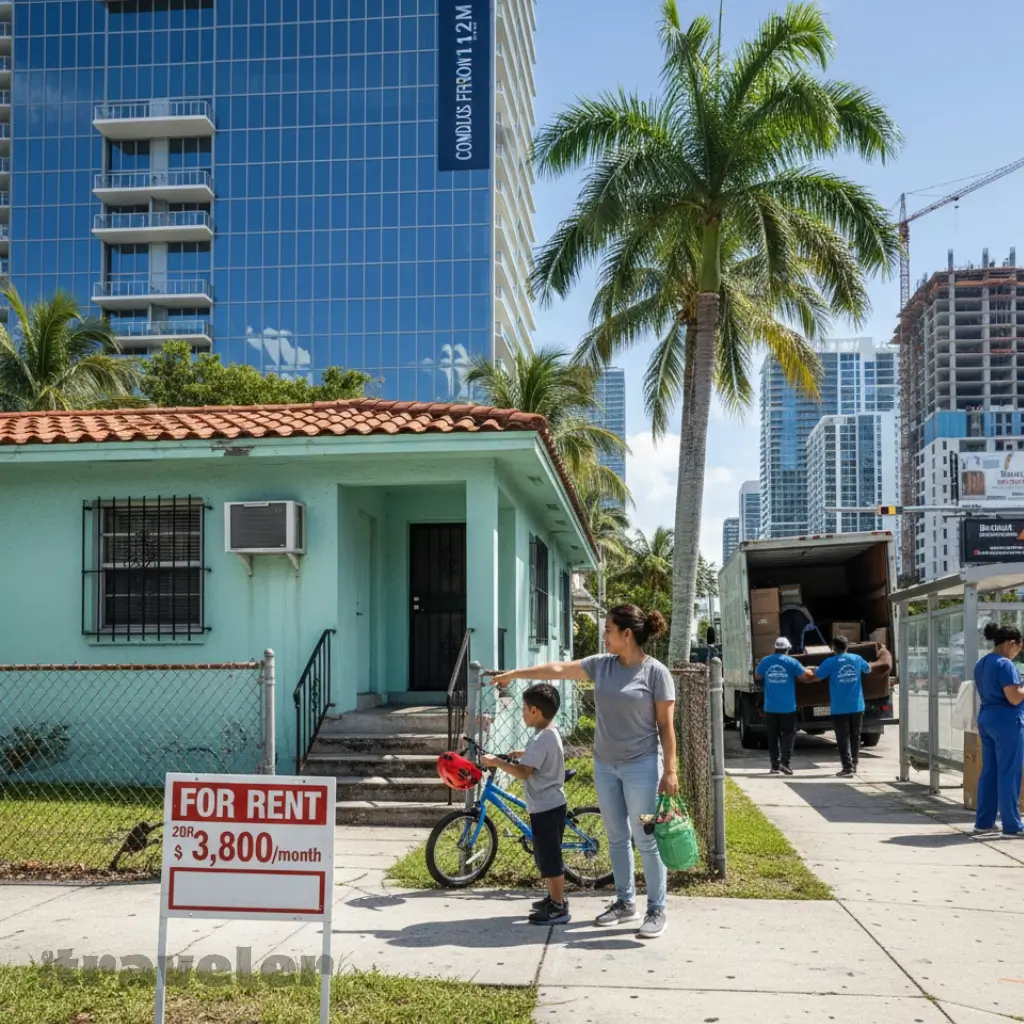
The influx of well-paid tech workers, financiers, and new businesses has undeniably pushed Miami’s cost of living higher, setting off a classic boomtown challenge: housing affordability. Miami was already a pricey real estate market due to its desirability, but recent demand has sent home prices and rents soaring to new heights:
- Skyrocketing Home Prices: By 2023, Miami had earned the unwelcome distinction of being the least affordable housing market in the United States. The median asking price for a home in Miami was around $615,000, and a household earning the median income would have to spend an astounding 85% of their income on mortgage payments to afford such a home. (For comparison, the second-least affordable city, Los Angeles, required about 82% of median income for the median home.) Home prices in Miami jumped roughly 30–50% in just a few years, illustrating the breathtaking appreciation fueled in part by affluent buyers from out of state.
- Rents on the Rise: Renters are feeling the squeeze as well. Since 2019, median rents in the Miami metro have climbed by double digits (over 25% in that period, by some measures), placing Miami among the most expensive U.S. cities for renters. In 2022, Miami tenants saw some of the fastest rent increases in the nation, straining budgets for locals whose wages haven’t kept pace.
- Local Workforce Priced Out: The boom in tech and finance jobs, while boosting the economy, has had a side effect of pricing out many local residents. As Miami-Dade County’s Mayor Daniella Levine Cava explained, the influx of newcomers “often have more cash and they’re taking up the housing, making it even less affordable… driving a lot of our local workforce out of the market”. With so many people moving in for “new jobs and new businesses” in Miami, demand has outstripped housing supply. Neighborhoods that were once affordable for middle-class families – like parts of Little Havana or North Miami – have seen housing costs jump beyond what longtime residents can afford. There is growing concern that teachers, first responders, hospitality workers and others essential to the city’s economy can no longer afford to live in the community they serve.
Local officials are now grappling with this affordability crisis. Miami-Dade County has started initiatives to increase the housing supply, from zoning changes to expedite development, to partnerships for more workforce housing.
The stakes are high: as Mayor Levine Cava cautioned, “If we don’t have housing for our workers, then we cannot sustain that growth.” Balancing prosperity with livability has become a key challenge for Miami as it evolves into a tech and finance hub.
The hope is that by addressing housing now – through more construction and creative policy solutions – the city can avoid the severe displacement seen in other boomtowns and maintain the diverse community that gives Miami its character.
Balancing the Boom with Tourism
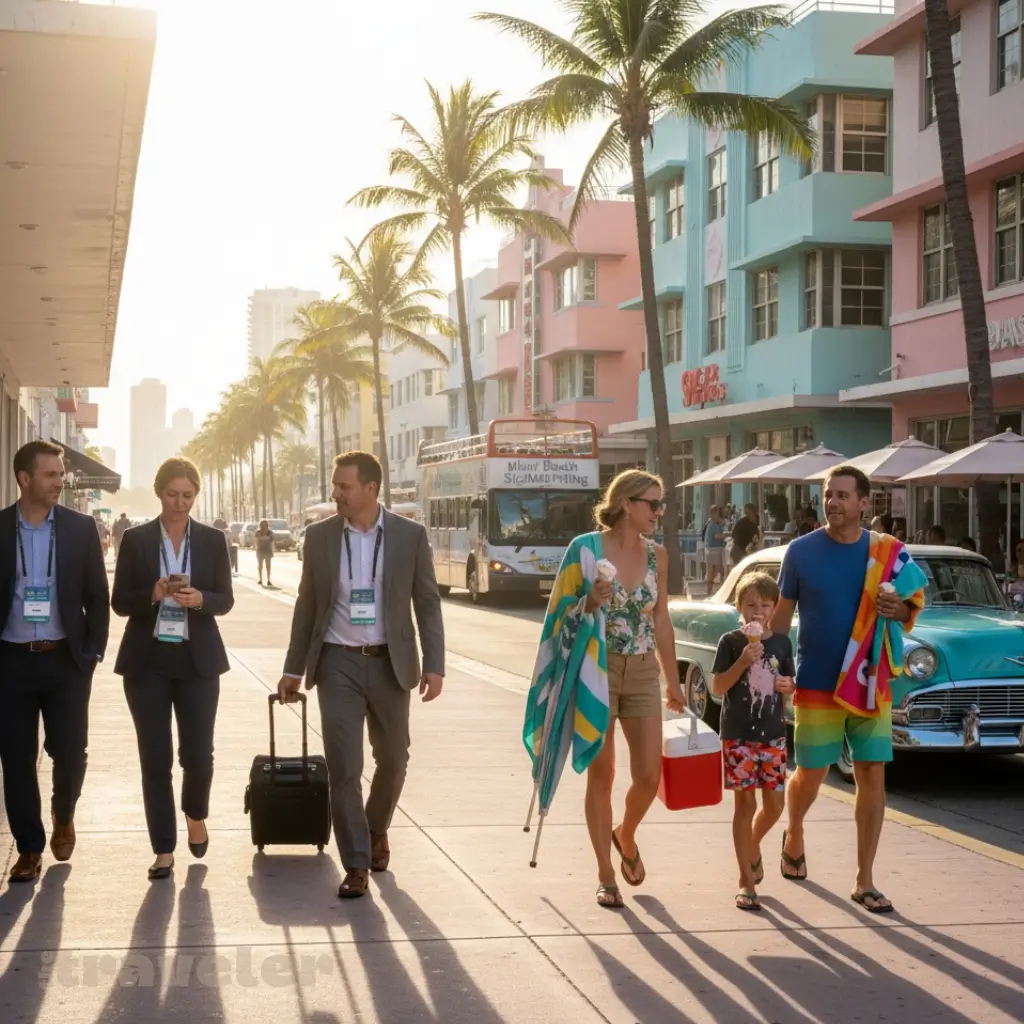
Amid all these changes, one thing remains true: tourism is still Miami’s lifeblood. Far from being displaced by the new economy, the travel and hospitality sector is thriving alongside Miami’s tech and finance boom – though the two can intersect in interesting ways.
In 2024, Miami-Dade County set an all-time tourism record, welcoming over 28 million visitors in a single year. Those visitors spent an estimated $22 billion locally and supported more than 209,000 jobs, making tourism one of the largest employment sectors in the county. Even as shiny new office towers rise, Miami’s beaches, cultural festivals, and cruise ships continue to draw crowds from around the world.
Crucially, the surge in business activity has not replaced tourism – if anything, it has diversified Miami’s economy. The city now plays multiple roles: a holiday paradise, a finance center, and a tech hotspot all at once. On a given week, downtown hotels might host both vacationing families and tech executives attending a conference.
Miami’s convention calendar is expanding with events like eMerge Americas and Art Basel, meaning more business travelers filling hotel rooms, especially in the cooler winter months. The Greater Miami Convention and Visitors Bureau noted that Miami-Dade led Florida in hotel occupancy in 2024 and ranked fourth nationally, with an average daily room rate among the highest in the U.S..
This suggests that the influx of high-earning professionals has boosted demand for upscale restaurants, hotels, and entertainment, benefiting the tourism sector. Upscale neighborhoods like Brickell and Midtown now boast trendy hotels and eateries that cater to both the new finance crowd and traditional tourists seeking a fashionable scene.
That said, the new economic currents do pose questions for tourism’s future. The hospitality industry faces the task of retaining service workers amid rising living costs, as mentioned earlier. There’s also a cultural balancing act: preserving Miami’s famous Latin-infused, beach-town soul even as the city becomes more of a 9-to-5 business hub.
So far, Miami is embracing both identities. “Tourism and hospitality are the lifeblood of Miami-Dade County… benefiting residents and businesses alike,” says David Whitaker, CEO of the visitors bureau. Local leaders are keen to ensure that even as Miami courts bankers and engineers, it remains a vibrant destination for leisure travelers.
Major upcoming events like the 2026 FIFA World Cup matches and Formula 1 races are expected to bring in droves of visitors, showing that Miami’s global appeal as a fun-in-the-sun destination endures.
In many ways, Miami’s tourism and its new finance/tech sector are starting to complement each other. The city’s enhanced stature means more people visiting for work who then return for vacations, and vice versa. A tech founder who comes for a conference may fall in love with South Beach and decide to rent a winter home. A tourist from Latin America might notice the city’s entrepreneurial energy and launch a startup here.
Miami’s ability to host both spring break beachgoers and blockchain moguls is now part of its unique brand. The challenge moving forward is maintaining that delicate balance – keeping the city attractive and accessible to tourists and new residents alike.
Conclusion
Miami’s evolution into a growing tech and finance hub is a story of a city reimagining itself. In a relatively short time, the Magic City has shown that it can be more than a playground for tourists – it can also be a place where startups launch, capital flows, and skyscrapers fill with Fortune 500 logos. The appeal to tech companies is evident in the surge of venture funding and marquee names setting up offices.
The finance influx into Brickell has given Miami a credible financial district that’s earned the nickname Wall Street South. Public-sector incentives and a warm welcome from officials greased the wheels for many of these changes. Of course, rapid growth has brought growing pains, most notably in housing affordability, as Miami struggles to ensure longtime residents aren’t left behind.
Yet, through it all, Miami’s core identity as a vibrant, multicultural paradise persists. The city is proving that embracing new industries doesn’t mean abandoning what made it special. The spring breakers on South Beach, the art aficionados at Wynwood, and the financiers in Brickell now share the same sunny skyline.
For travelers, this means Miami offers more layers than ever: you might tan on the beach by day and attend a tech networking event by night. Few cities in the world let you close a business deal in the morning and sip a cocktail by a palm tree in the afternoon. Miami does – and that blend of work and play is precisely its competitive edge.
FAQ
Why is Miami attracting tech companies?
Pro-business climate, no state income tax, lifestyle appeal, and rising VC funding.
What firms have moved to Brickell?
Citadel, Blackstone, BlackRock, Goldman Sachs, Thoma Bravo, and global banks.
What incentives exist for companies?
Tax refunds for job creation, relocation grants, training subsidies, and Opportunity Zone perks.
What’s the housing impact?
Miami became the least affordable U.S. housing market, with home prices and rents soaring since 2020.
Is tourism still important?
Yes. 28M+ visitors in 2024, $22B in spending, and tourism jobs still anchor Miami’s economy.
